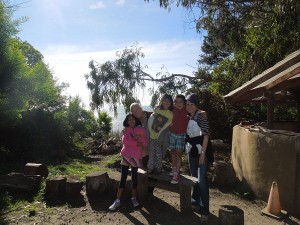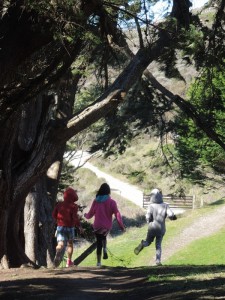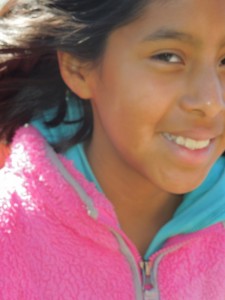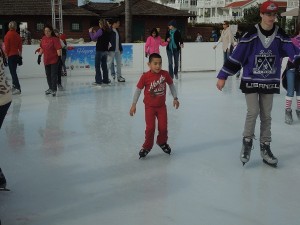Recently, two articles about the ways adoptees are affected by adoption made a big impression on me. The first, Adoptee View: What Can a Tiny Baby Know? by Karl Stenske, recounts the trauma experienced by babies who are separated from their birth mothers. The second, Primal Wound Author Speaks on Adoptee Challenges, an interview conducted by Nancy Axness with Nancy Verrier, discusses the phenomenon of the primal wound—that is, the deep and lasting hurt felt by people who are relinquished for adoption. Verrier is the author of The Primal Wound and has written and spoken extensively about this concept.
As an adoptive parent, I finished the articles wondering “Are my children doomed to a lifetime of pain? Can I do anything to help them heal from their primal wounds?”
Then, this week, a friend sent me a link to a post titled Adopter Savior Syndrome (A.S.S.), on the blog Coloring Out Lori Jane. The first few paragraphs left me nearly gasping for air:
What is Adopter Savior Syndrome (A.S.S.)?
A.S.S. is a highly contagious and devastating disease that is estimated to be found in millions of White adoptive parents and White adoptive prospective parents around the constructed Western world. Adopter Savior Syndrome is not yet fully understood, though it is speculated to be a White disease that is particularly pervasive among desperate wives and cisgender men with Yellow Fever… Ask your adult Adoptee about A.S.S. if you experience the urgent and persistent need to adopt in order to become a complete person.
And that’s only the first hundred words. You must read the whole post to gain the full impact. Better yet, read all of Lori Jane’s posts to understand the depth of her sorrow and rage at being a Korean baby removed from her birth country and adopted by white American parents. Through her writing, Lori Jane expresses pain related to a primal wound that feels acute and devastating.
After reading these three essays, I was tempted to take to my bed, overwhelmed by inadequacy. Then I realized: I’m my children’s mother. Even if I wanted to, I don’t have the luxury of saying “This is too hard! I give up!” So inside of hiding under the covers, I went outside for a walk, and the fresh air made me think: “What can these writers teach me? Are there lessons to be learned from each of their experiences? How can I try to do better for my children?”
One of life’s realities is that many families face challenges. Illness, a physical or mental disability, poverty, insecurity, anxiety, alcoholism, physical or mental abuse, isolation, fear. One of the realities of our home is that we—my husband Tim and I, and our children, Olivia (10) and Mateo (8)–are a transracial adoptive family. Among Tim and my duties as parents is to help our children navigate that experience. We strive to give our kids a context where they feel comfortable with their adopted-ness.
During my walk, I thought of a list of ways Tim and I—and literally hundreds of other adoptive parents we know—try to foster healthy attitudes toward adoption, Guatemala, and our family. I don’t pretend that this list, or we, are perfect, or even the best solution. Nor do I pretend our methods can heal the indelible scars of the primal wound. My list serves merely as a place to start:
We talk about adoption. A lot. From the moment we first held our babies in our arms, we’ve told them their adoption stories: “You were born in another mommy’s tummy.” Our conversations continue today: “How did you feel about meeting your birth mom? Anything you want to talk about?” We don’t wait for our children to ask questions, although we are happy when they do. We keep the channels open by bringing up the subject ourselves.
We study Spanish. Personally, I’m terrible at it, but the point is I try, and my children appreciate the effort. We honor our children’s heritage, and that includes studying the language that people in their native country speak.
We visit Guatemala. This is easy for us, because we love the country. Yes, it’s an international flight to Central America. We can’t drink the water or eat the lettuce. Sometimes we worry about our safety. But those inconveniences are insignificant when compared with our children’s joy at getting to know their birth country, and feeling at home there.
We go to Heritage Camp. In many adoption circles, heritage camp is criticized as a faux experience where families learn to make tortillas and black beans. In fact, Heritage Camp has less to do with “heritage” than with our children connecting with other kids who share a very specific experience: being adopted, being a foreign-born person in the United States, having a skin color/religion/cultural history/interest set/talents/desires/that may be very different from one’s adoptive parents and peers.
At home, we create a local network of other adoptive families, with whom we meet monthly. We view this as our own mini-heritage camp. (See above.) Given a choice, we will always choose the dentist, healthcare provider, church leader, and teacher who looks like our kids.
We searched for and found our children’s birth mothers. Finding “Ana” and “Lety” perhaps hasn’t “healed” for our children what Nancy Verrier calls the primal wound, but it has gone a long way toward filling in the blanks about who they are and where they come from. My kids feel loved by their birth mothers, and seem to understand the circumstances that compelled each of these women to do what they did, which is place their children for adoption.
We embrace the unease. We tease it apart and analyze it. One day, Olivia said to me, “Really, I should be living in a village and speaking Spanish and K’iche. I should be wearing traje (Guatemala’s native dress).” Instead of feeling rejected or threatened, I validated her feelings by suggesting she address the dichotomy she feels in a painting. (Olivia is a talented artist.) Immediately, she planned a self-portrait that showed her split down the middle: half in everyday clothes, half in traje, against a background of part suburban California and part Guatemalan countryside. We both agreed that adoption likely will inform Olivia’s art for many years to come.
Finally, we honor our children’s birth country by supporting organizations that help women, children, and families who live there—a feeding program, a convent, a home for the elderly, a high school student sponsorship, a program for teachers, and birth family support. Our actions show our children that we care about the future of Guatemala.
That’s my list. If anyone has any other suggestions or comments, please feel free to share them with me. I learn best by listening.


 ShareThis
ShareThis
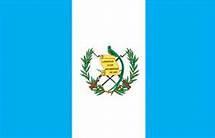



 ShareThis
ShareThis
